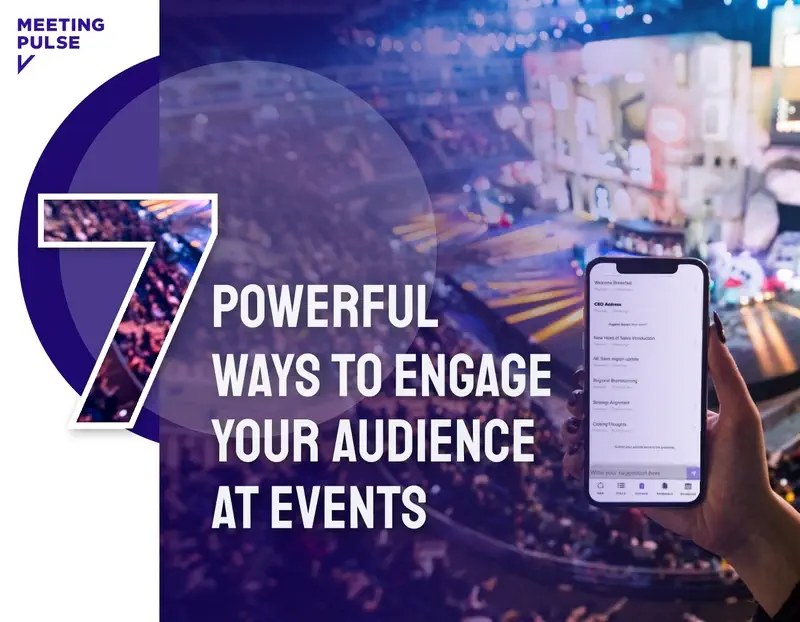For presenters, few experiences are more disheartening than investing hours into crafting a presentation, only to find audience members distracted by their phones or lost in daydreams. To prevent this, it’s crucial to capture your audience’s attention within the first few moments of your presentation. Audience engagement is a key indicator of how much attendees are participating. Are they attentive and contributing verbally or physically? Are they snapping pictures of your slides? Do they seem to enjoy the experience overall?

An engaged audience is not only more likely to participate in your presentation but also more likely to learn. They are also more inclined to attend future events and recommend them to others. Audience engagement strategies are powerful tools for focusing your audience’s attention on your presentation (or your series of presentations). Here are seven great strategies for reaching out and grabbing your audience. Read through the following tips and download the MeetingPulse eBook for more information
1. Start with a Strong Hook
The beginning of your presentation sets the tone for the entire session. Start with a compelling story, a surprising fact, or a provocative question to immediately capture your audience’s attention. This initial hook can draw them in and make them eager to hear more.
2. Utilize Interactive Technology
Incorporating interactive technology, such as live polls or Q&A sessions, can significantly boost audience engagement. Audience participation and engagement tools like MeetingPulse allow presenters to gather real-time feedback and encourage audience participation. This not only keeps attendees engaged but also provides valuable insights into their thoughts and opinions.
3. Encourage Participation Through Questions
Asking questions throughout your presentation is a simple yet effective way to engage your audience. Encourage them to think critically and share their thoughts. Open-ended questions can lead to lively discussions and make the presentation feel more like a conversation than a lecture.
4. Incorporate Visuals and Multimedia
Visual aids and multimedia elements can make your presentation more dynamic and engaging. Use images, videos, and infographics to illustrate your points and break up text-heavy slides. This can help maintain audience interest and make complex information easier to understand.
5. Create Opportunities for Interaction
Design your presentation to include opportunities for audience interaction. This could be through small group discussions, interactive exercises, or even simple gestures like asking attendees to raise their hands in response to a question. These interactions can make the audience feel more involved and invested in the presentation.
6. Use Storytelling Techniques
Storytelling is a powerful tool for capturing and maintaining audience attention. Weave stories into your presentation to illustrate key points and make your content more relatable. Personal anecdotes or case studies can make your presentation more memorable and impactful.
7. Provide Clear Takeaways
Ensure that your audience leaves with clear takeaways from your presentation. Summarize the key points and provide actionable steps or recommendations. This not only reinforces the information but also gives attendees something tangible to apply in their own contexts.
Conclusion
Engaging your audience is essential for a successful presentation. By employing these strategies, you can capture their attention, enhance their learning experience, and encourage future participation. Interactive tools like MeetingPulse can play a crucial role in this process, offering innovative ways to involve your audience and gather real-time feedback. Remember, an engaged audience is not only more likely to appreciate your presentation but also to spread the word, ensuring the success of future events.






